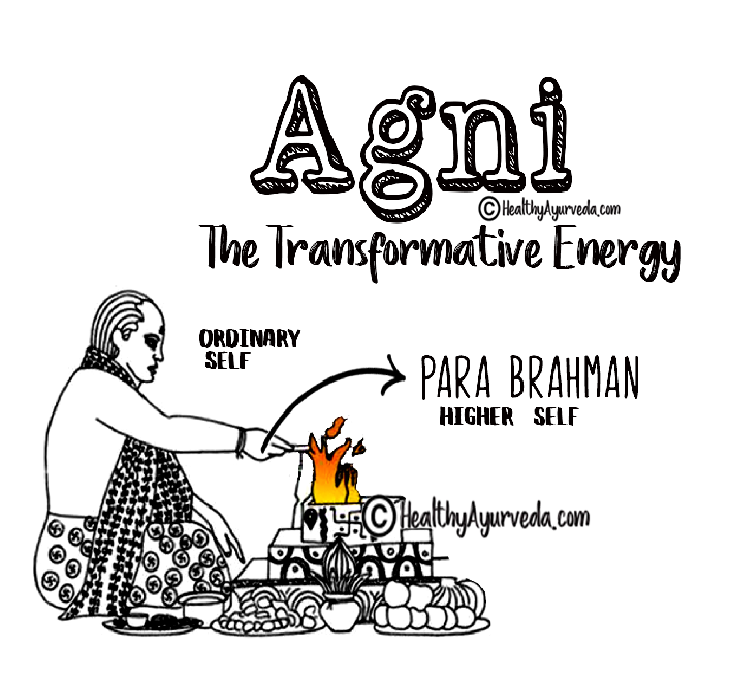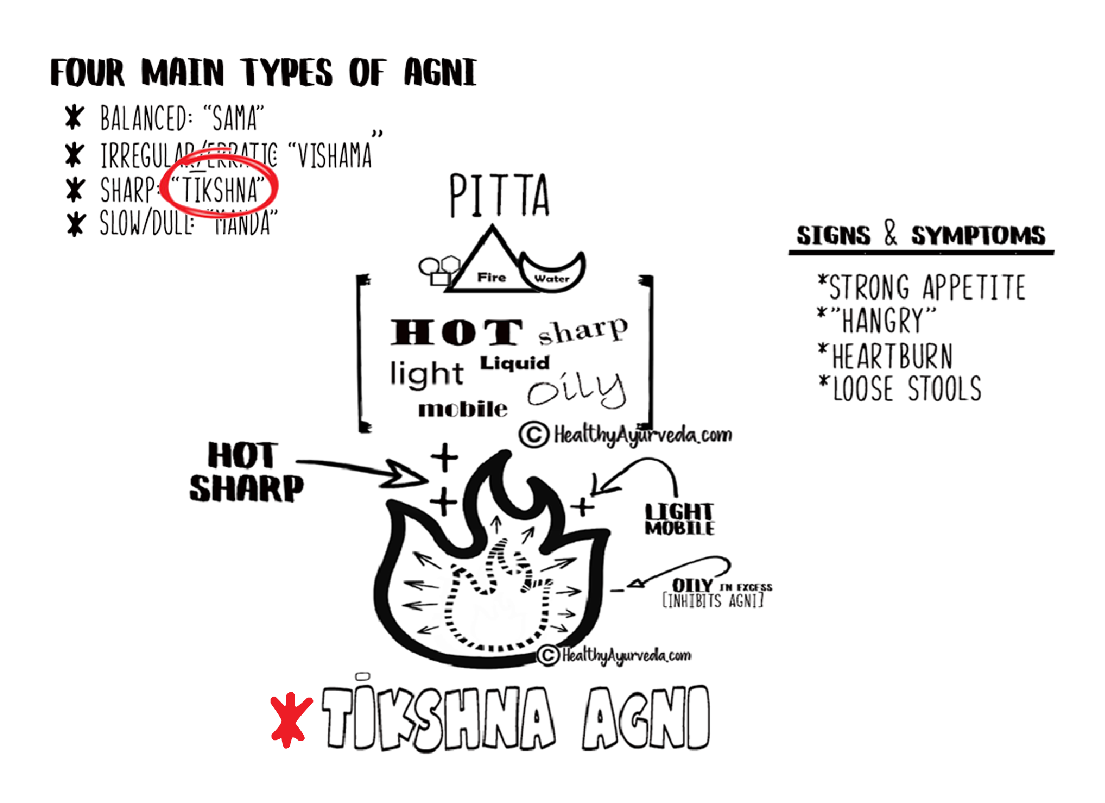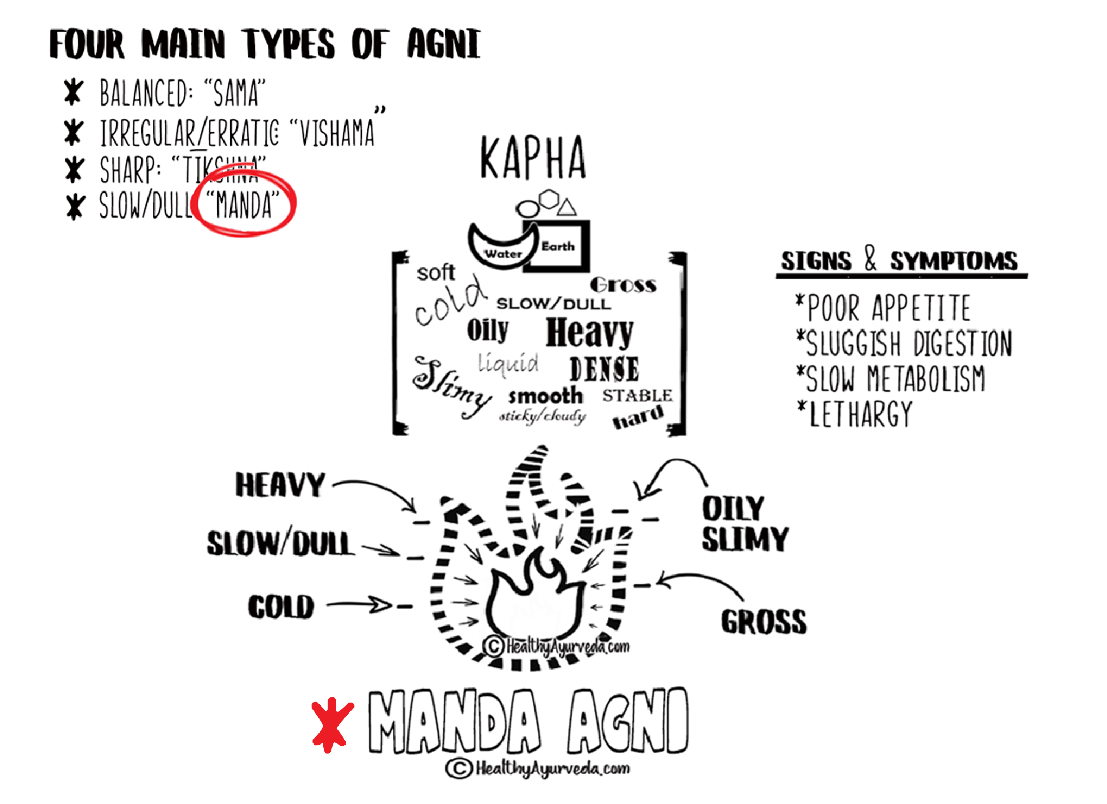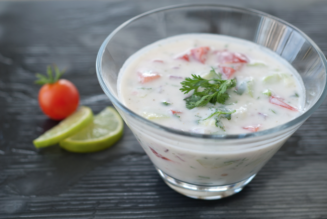Disclaimer:
All content included on this website (including, but not limited to, images, photos, graphics and text) is the property of ‘Healthy Ayurveda’ and ‘Vedic Sage’ and as such is protected by US and international copyright and other intellectual property laws.
The Ayurveda Guide: Agni
Charaka, the ancient seer of Ayurveda, states that “the individual is the epitome of the universe”. This implies that – that which exist in the vast eternal universe also appears within the inward cosmos of the human body. The entire universe is made from and these elements are referred to as “Panchamahabhutas” … translated as ‘The 5 Great Elements’; i.e. ether, air, fire, water and earth.
The Principle Of Transformation:
Fire is radiant energy and is active and changeable. It is the source of all transformative processes in the body and is responsible for digestion, absorption and transformation of food into energy.
Qualities Of Tejas/Fire:
– Hot
– Sharp
– Minute
– Light
– Rough
– Non-slimy
The qualities of hot, dry, penetrating and sharp demonstrate the radiant energy of Fire in the body. Skin complexion, eye luster and intelligence are expressions of the elemental energy of Fire. The liver, stomach and the pancreas are the primary sites of the Fire element. The element of Fire brings the qualities of attention, appreciation, recognition, ambition and competitiveness.
The ancient Vedic culture has long revered Agni [i.e. Fire] as being the bridge between our normal/ordinary state of mind and the Divine Self [i.e. Para Brahman]. Fire is honored as being sacred as it has provided warmth. light, and the ability to cook which has allowed for the survival of man. Similarly, when we eat … we should eat in a way to honor the sacred fire within.
Agni Is [Nearly] Everything …
The digestive fire [“Agni”] is thought to be that which gives strength, vitality, and happiness to all human beings. More specifically, Agni is thought to be the digestive fire which governs digestion, absorption and assimilation of all nutrients of the body. It’s explained that if Agni is balanced then the individual will be happy, healthy and holy.
Functions Of Agni:
- Pakti: digestion, absorption, and assimulation of food
- Darshana: visual perception
- Matroshna: maintains normal body temperature
- Prakruti varna: maintains bodily constitution & complexion
- Shauryam: gives confidence, courage, and fearlessness
- Harsha: creates joy, cheerfulness, laughter, and contentment
- Prasada: provides mental clarity and wholeness
- Raga: creates affection, interest, enthusiasm
- Buddhi: reasoning capacity, logical thinking, discrimination
- Dhairyam: gives patience, stability, and confidence
- Dirgham: maintains the span of life
- Prabha: creates a healthy glow and luster
- Bala: provides strength and vitality
* Above List From: Textbook Of Ayurveda, vol. 1; Dr. Vasant Lad
Agni provides our actual capacity to transform the food—and situations, thoughts and emotions—that we take in so that it becomes nourishment. The very best way to support your agni is to give it the proper time and space to do it’s job.
General Guidelines:
- Wait at least 4 hours between meals (with no snacking in between).
- Drink very little liquid with meals—or even within 1 hour of eating. Small sips of warm soup or tea may aid digestion, but a big glass of icy drink will smother the flame of agni.
- Eat only during daylight hours. Give the body at least a full 12 hours of night to perform the more subtle aspects of digestion—clearing out the organs and allowing them to rest.
- Eat only when you feel real hunger. If you don’t know what real hunger feels like, you should experiment a little bit with it (those with irregular or excess agni may often experience “false hunger”).
- Base your meal frequency and size on your level of activity on a given day. It could be as simple as this: the more physical or mental effort you put out, the more food you need.
- People with clearly slow agni may choose to fast or to eat very lightly one day a week so that undigested food which is clogging the system may be digested.
Four Main Types Of Agni …
According to Ayurveda, there are Four Main Types Of Agni.
- Balanced [Sama Agni]
- Irregular/Erractic [Vishama Agni]
- Sharp [Tikshna Agni]
- Slow/Dull [Manda Agni]
Normal & Balanced Digestion ~ Sama Agni
When Agni is balanced and digestion, absorption and elimination are all normal then this is considered a state of good health. Such a person who has proper functioning Agni not only has perfect physical health but also possess a calm and serene mind with great clarity and bliss.
Essentially, healthy happy & holy.
Irregular & Erratic Digestion ~ Vishama Agni
Ayurveda explains this type of digestion as being erratic and irregular because at times you may experience diarrhea with lots of gurgling sounds in the intestines. Other times, you you will likely experience abdominal distention, gas, constipation and colicky pain. This type of digestion is commonly associated with Vata types. Vata types often have irregular digestion; meaning very hungry at times and at other times no hunger at all. Vata types are also thought to have a “hard” digestive tract and therefore makes them more vulnerable to experience symptoms of abdominal distention, flatulence, and even develop a nervous appetite.
Vata types can have eyes bigger than thier stomach so the first suggestion would be to consider having smaller yet more regular meals. In fact, these individuals do best with small, unctuous, warm, and regular meals. Generally speaking, vata types benefit most from sweet, sour and salty foods that is somewhat oily and even spiced up to one’s liking.
Other Common Associations:
– dry skin
– cracking and popping of joints
– low back pain and/or sciatica
– insomnia
– excessive worry, fear, and anxiety
Improving Digestion:
Keeping in mind that prevention is better than cure your goal should be centered on the maintenance this state of equilibrium. Therefore, consider the following:
- Allow 4-6 hours for proper digestion
- Eat only when you’re truly hungry
- Avoid snacking
- Drink less water during meals
- Eat calmly in a soothing environment
Sharp Digestion ~ Tikshna Agni
We can think of this type of digestion and being intense in the beginning but often lacking sustenance to endure the entire process of digestion optimally to completion. More simply, you have the ability to eat large meals, frequently. However, in doing so you will also often experience hyperacidity, and even become vulnerable to having loose stools or diarrhea.
This type of digestion is commonly associated with Pitta types. Pitta types often have a ferocious appetite and are thought to have a sharp and robust digestive ability. These individuals can digest just about anything they eat. Because pitta types have a “sharp” digestion, they can easily become irritable if they suddenly become hungry and there is no food to be had. Therefore, it is important for pitta types to eat on time. Interestingly, pitta types commonly crave hot and spicy food. In fact, “unbalanced” pitta types often have cravings for alcohol, pickles and of course … spices! Therefore, once again, this stresses the importance of pitta types to avoid spicy foods since these individuals are most prone to acid indigestion and heart burn. Therefore, these individuals may want to consider consuming a mildly sour flavor [i.e. buttermilk or even a few drops of lime] to help regulate their hyper secretion of digestive juices. The best flavors to help manage the fiery pitta type? Generally, pitta types do best with sweet, bitter and astringent flavored food which is cool in nature and lightly cooked.
Other Common Associations With Sharp And Intense Digestion:
– heart burn
– acid indigestion
– gastritis
– hypoglycemia
– irritability and anger
– critical and judgmental attitude
Slow/Dull Digestion ~ Manda Agni
You may have wondered at times how in the world can you gain weight simply by taking a small sip of water. Yes, that’s quite an exaggeration. However, it is likely you commonly experience having a slow metabolism, a full sensation in the stomach, and can even go long periods of time without developing a strong appetite. Often, after a meal you may notice a heavy feeling and even feel the need to take a nap. This type of digestion is commonly associated with Kapha types. Kapha types are thought to have the most stable appetite. However, kapha types are also the ones to have a more slower metabolism and digestive capacity. Hands down, kapha types are loving and compassionate. Along the same lines, kapha types enjoy food and if their need for love goes unnoticed, then these individuals are more prone towards “comfort-eating” more so than others.
Kapha types often have less secretion of digestive enzymes and therefore will likely find benefit with bitter and pungent flavors. When kapha types are “unbalanced” they will crave both sweet and oily food. However, flavors most beneficial for kapha types are pungent, bitter and astringent flavored foods which can help maintain optimal health for these types. Likewise, since kapha is “heavy and earthy” in nature, these individuals will find benefit with fasting on a routine but structured basis.
Other Common Associations With Dull Metabolism:
– weight gain
– edema
– congestion
– lethargy and excessive sleep
– attachment and possessiveness
Disclaimer:
All content included on this website (including, but not limited to, images, photos, graphics and text) is the property of ‘Healthy Ayurveda’ and ‘Vedic Sage’ and as such is protected by US and international copyright and other intellectual property laws.
This information is strictly for educational purpose only and not considered medical advice. Always first discuss with your primary care physician before considering any new health regimen.
Resources:
Ayurvedic Perspective On Selected Pathologies, Vasant Lad, BAMS – 2nd Edition Revised
Textbook Of Ayurveda Vol. 2 & 3, Vasant Lad, BAMS












![Female Health: Amenorrhea [cessation of menses] – An Ayurvedic Perspective](https://healthyayurveda.com/wp-content/uploads/2015/07/1.-Amenorhea--327x219.png)




